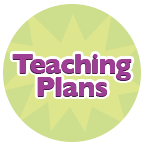Conversation Collections is an engaging oral language game during which students work in small groups to explore and discuss collections of small objects. It is a low-risk game that encourages students to interact and converse with each other; bringing forward their own experiences to share with a partner. Positive relationships are developed because the social skills of taking turns and cooperating are reinforced. There are several variations of the game which can be introduced throughout the school year. You can target various curriculum areas depending on the types of materials used.
Materials:
– collections of small objects (e.g., finger puppets, plastic fruits and vegetables, plastic tools, small books, beads, attribute blocks, balls, shells, buttons, miniature cars, small dinosaurs, various lids, jewellery, key chains, rocks, etc.)
– large self-closing bags or clear plastic bins to store the collections
Grouping: small group and partners
Introducing the Game
- Have a small group of students sit in a circle with the chosen collection in the middle.
- Spread out the collection.
- Provide free exploration time for five minutes. Invite students to choose one interesting item to explore, return it when finished, and then choose another item.
- Pair students for partner work.
- Structure the activity by modelling with a partner.
- Provide time for students to have several turns. Monitor each pair as they converse, take turns, and interact.
- Conclude the activity by asking students to share something a partner discovered.
- Review and reinforce the social skills practised.
Playing the Game
- Decide who is Partner A and who is Partner B. Partner A goes first.
- Pick an interesting object and tell your partner something about it.
- Pass the object to Partner B.
- Partner B tells you something he/she notices about the object.
- Continue talking about the object until you run out of ideas.
- Repeat the activity with Partner B choosing the object.
- Continue playing until the teacher signals the end of the activity.
Extensions
- One student in the group examines the collection, visually chooses an object and describes it for the group. Members of the group try to guess the ‘secret object.’
- In partners, Partner A chooses two objects from the collection and explains to Partner B how the objects are similar. Partner B chooses two objects from the collection and explains how the objects are different.
- Partners can sort and classify a collection. Another set of partners can guess the sorting rule.
* Adapted from Encouraging Early Literacy in a Child-Centered Kindergarten Classroom: Resource Handbook by Judy Ellis, Bureau of Education and Research, Bellevue, WA, 2002, pp. 32-33.
